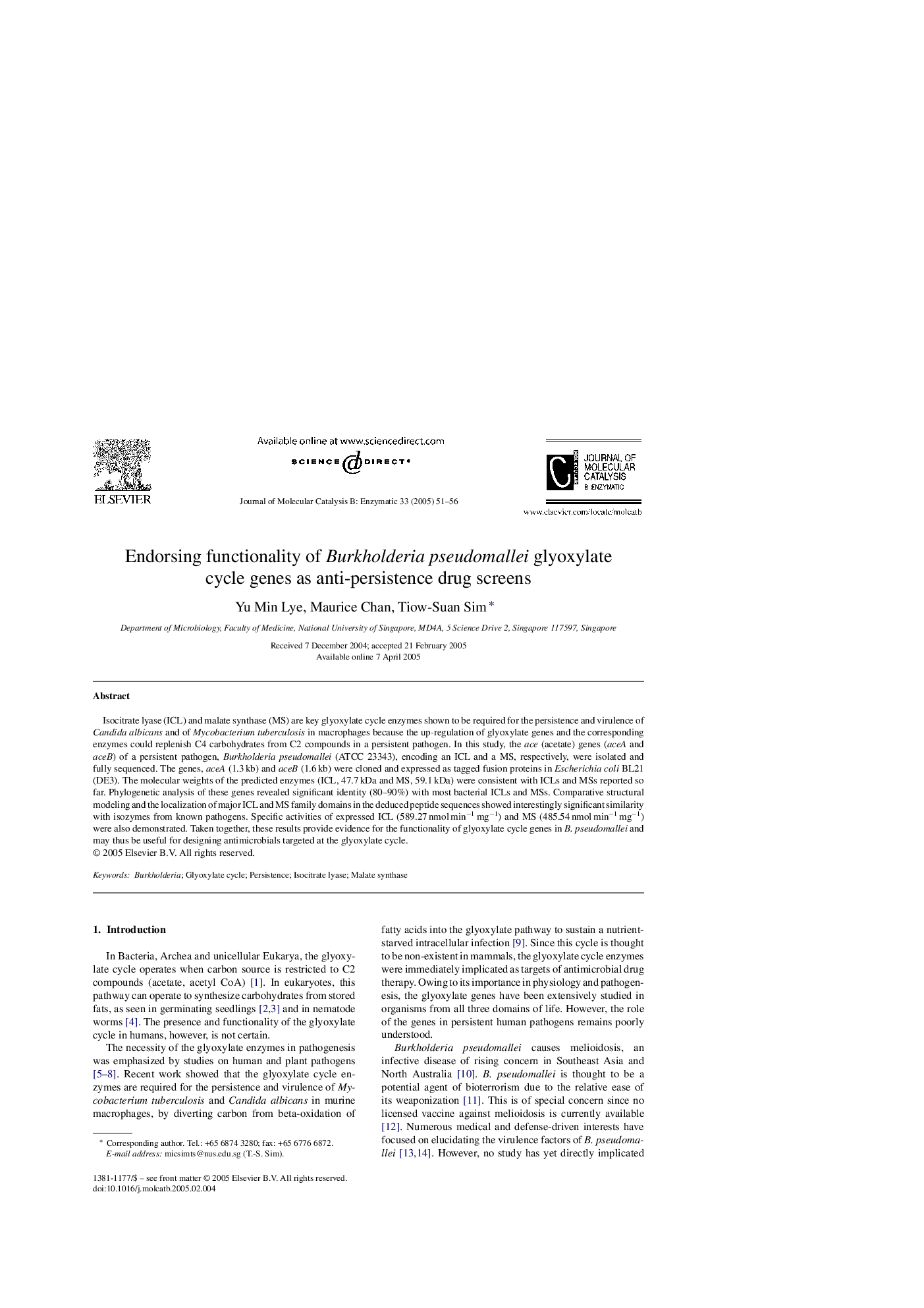| Article ID | Journal | Published Year | Pages | File Type |
|---|---|---|---|---|
| 9616789 | Journal of Molecular Catalysis B: Enzymatic | 2005 | 6 Pages |
Abstract
Isocitrate lyase (ICL) and malate synthase (MS) are key glyoxylate cycle enzymes shown to be required for the persistence and virulence of Candida albicans and of Mycobacterium tuberculosis in macrophages because the up-regulation of glyoxylate genes and the corresponding enzymes could replenish C4 carbohydrates from C2 compounds in a persistent pathogen. In this study, the ace (acetate) genes (aceA and aceB) of a persistent pathogen, Burkholderia pseudomallei (ATCC 23343), encoding an ICL and a MS, respectively, were isolated and fully sequenced. The genes, aceA (1.3 kb) and aceB (1.6 kb) were cloned and expressed as tagged fusion proteins in Escherichia coli BL21 (DE3). The molecular weights of the predicted enzymes (ICL, 47.7 kDa and MS, 59.1 kDa) were consistent with ICLs and MSs reported so far. Phylogenetic analysis of these genes revealed significant identity (80-90%) with most bacterial ICLs and MSs. Comparative structural modeling and the localization of major ICL and MS family domains in the deduced peptide sequences showed interestingly significant similarity with isozymes from known pathogens. Specific activities of expressed ICL (589.27 nmol minâ1 mgâ1) and MS (485.54 nmol minâ1 mgâ1) were also demonstrated. Taken together, these results provide evidence for the functionality of glyoxylate cycle genes in B. pseudomallei and may thus be useful for designing antimicrobials targeted at the glyoxylate cycle.
Related Topics
Physical Sciences and Engineering
Chemical Engineering
Catalysis
Authors
Yu Min Lye, Maurice Chan, Tiow-Suan Sim,
